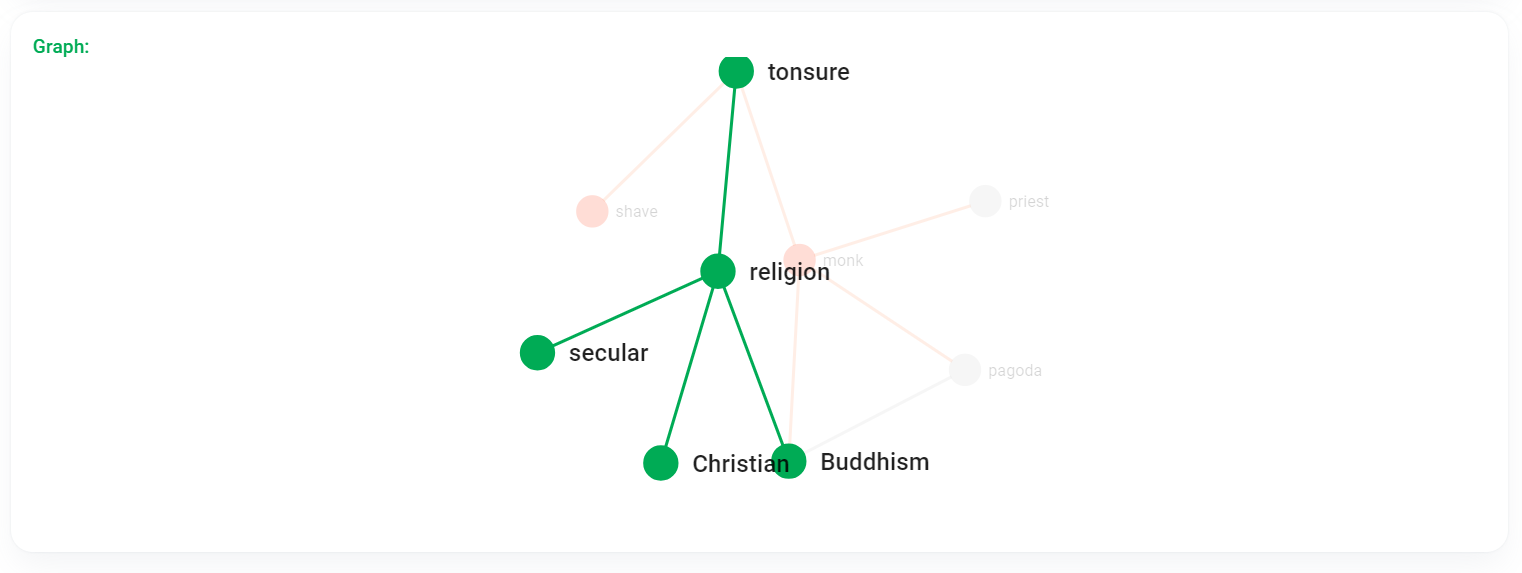Search
This section describes the Search screen.
This screen has 2 tabs: Search Example and Search Concept Association.
The first time you access this screen, the default Search Example tab is opened. From next time, the last opened tab will be opened.
Search Example
Search Criteria
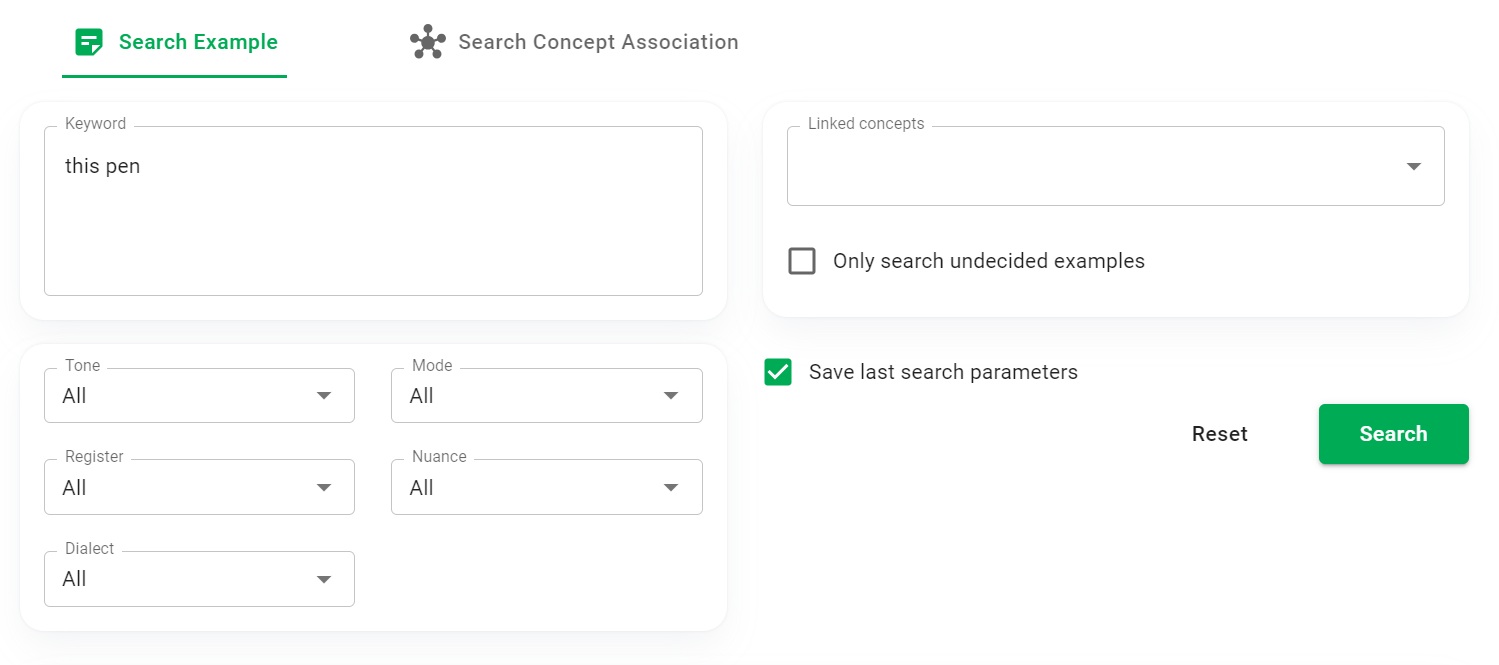
You can use 1 or more criteria to search for examples stored in the dictionary.
With the Keyword field, you can enter a few characters or keywords to find a match with the example content or the example notes.
With combobox Tone, Mode, Register, Nuance, Dialect, default value is all. You can change to find examples with corresponding attribute values.
In the Linked concept multiselect box, you can select one or more concepts to find examples associated with those concepts. If you leave this box blank, all examples will be searched.
Checkbox Only search undecided examples helps you find Undecided examples. If this checkbox is checked, the Linked concept box is disabled and the linked concept values are not used for search. Otherwise, if the Linked concept box is not empty, the checkbox will be disabled (because an example that links to at least 1 concept cannot be an Undecided example). By default, the checkbox is unchecked.
When you click Search, the app will perform the search. If checkbox Save last search parameters is checked (by default, this checkbox is checked), the search parameters will be saved for subsequent searches.
To restore the default set of search parameters, click the Reset button.
Search Results
The example search results show up as a list. If the example content is too long, only the first highlighted part will be displayed (with a few words before and after).
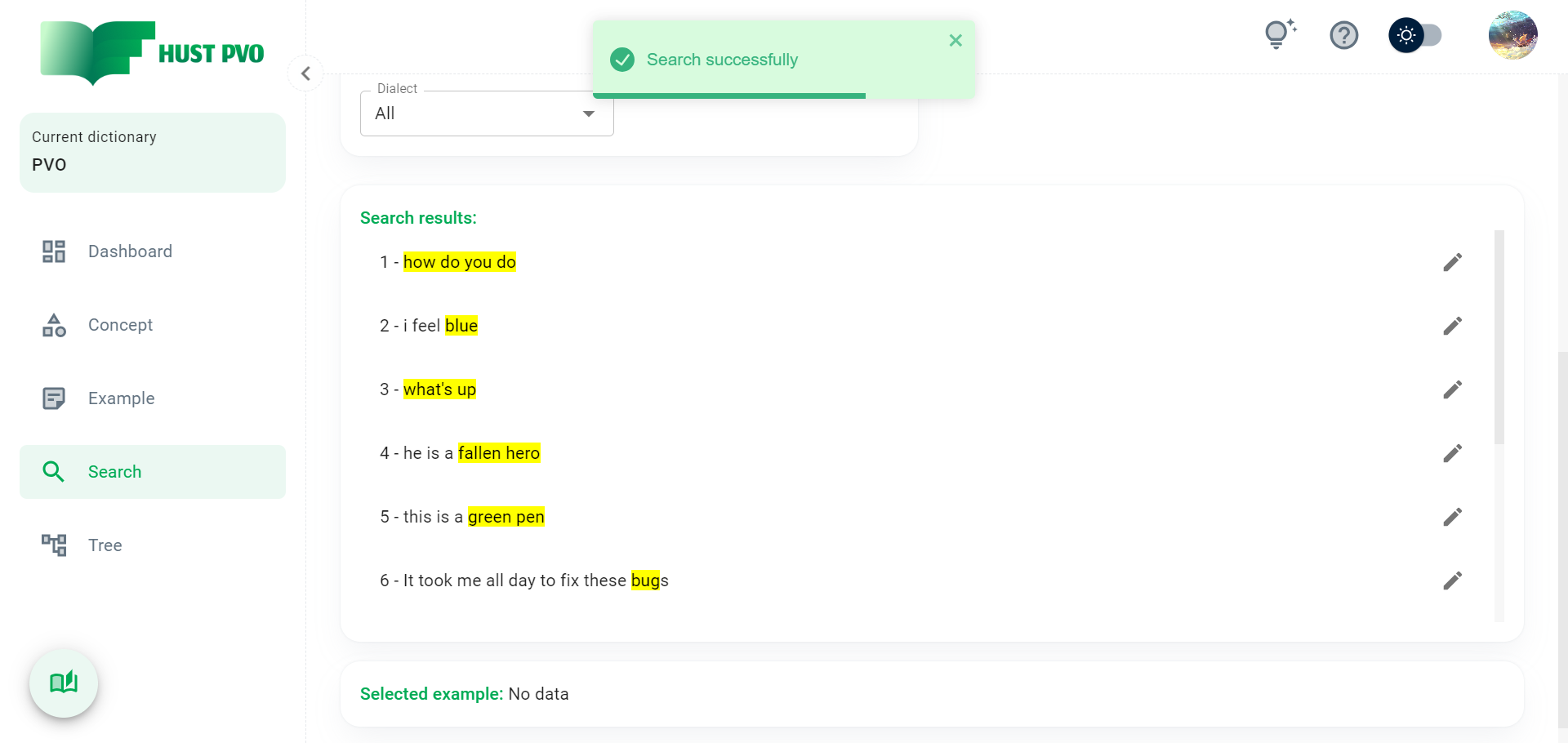
Click an example in the list, you will see the specific information of that example in the Selected example section.
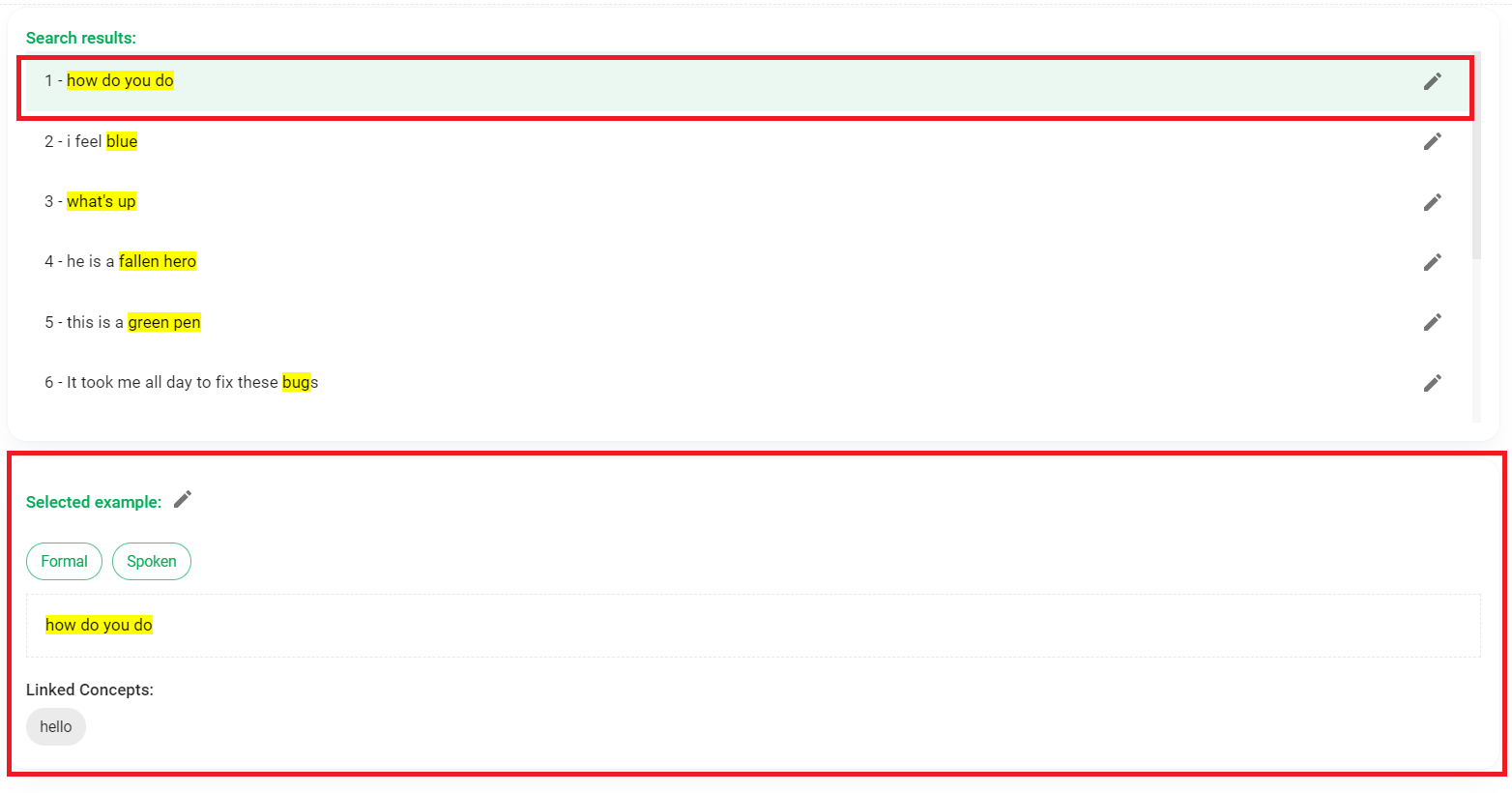
Only attribute values other than Neutral are explicitly listed.
Hover into a concept in the Linked concept section you will see the type of established link.
Edit and delete example
Click the pencil icon at an example in the list of search results, the Edit and Delete example dialog box will appear.
Search Concept Association
On this tab, you can select 1 to 10 concepts to search for concepts that link to the selected concepts.
In a real-life situation, this feature helps you to find a concept without remembering it exactly, but only remembering a few concepts related to the concept you want to find.
The search results returned are a list of concepts, sorted in order of relevance. HUST PVO uses an algorithm to compute activation values on a semantically linked network. This algorithm is referenced from the research of Dr. Ho Le Vu (Ho Le Vu, 2006, pp. 24-30).
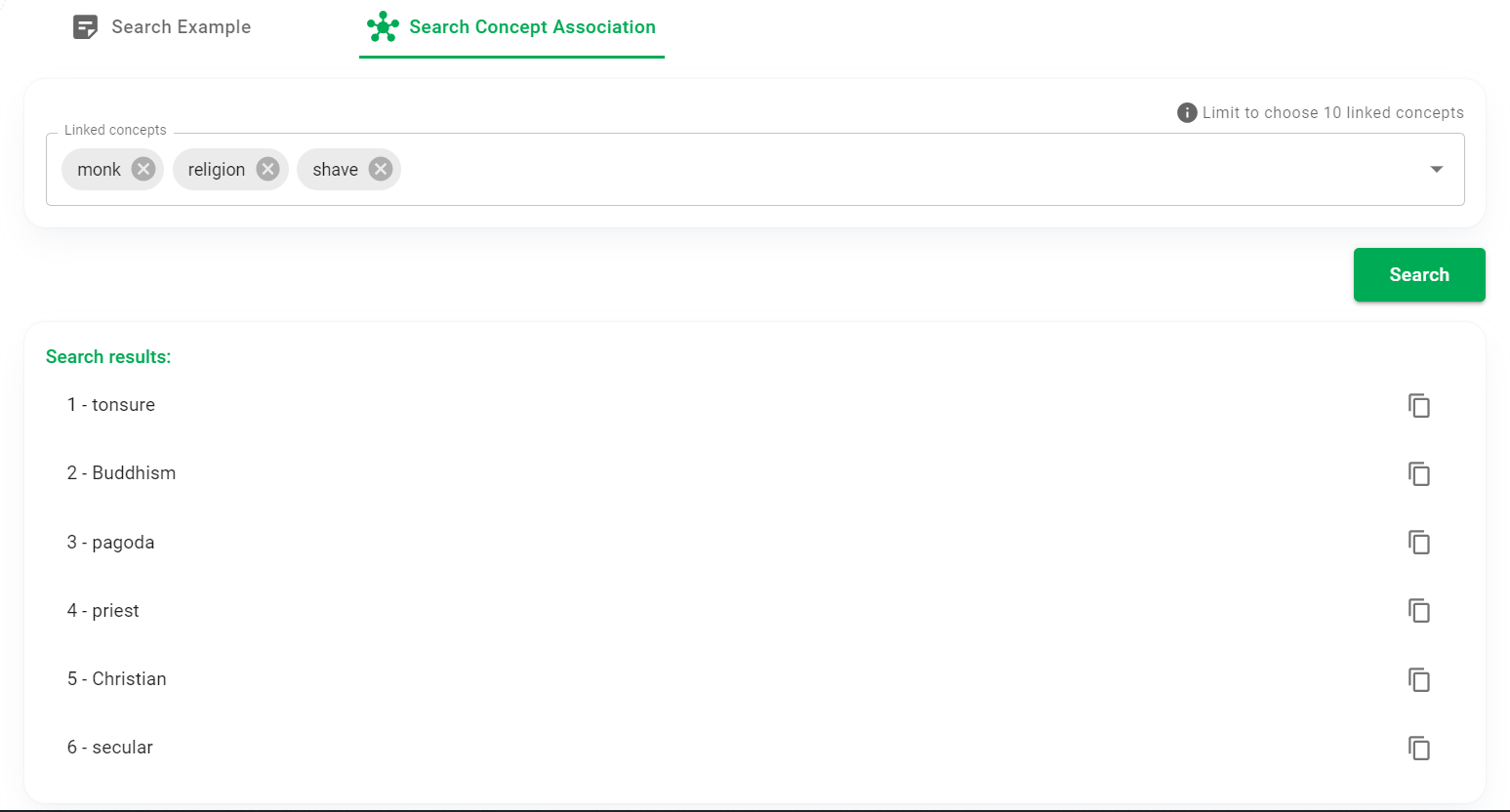
In addition to the list of results, HUST PVO also provides users with an intuitive view through the graph.
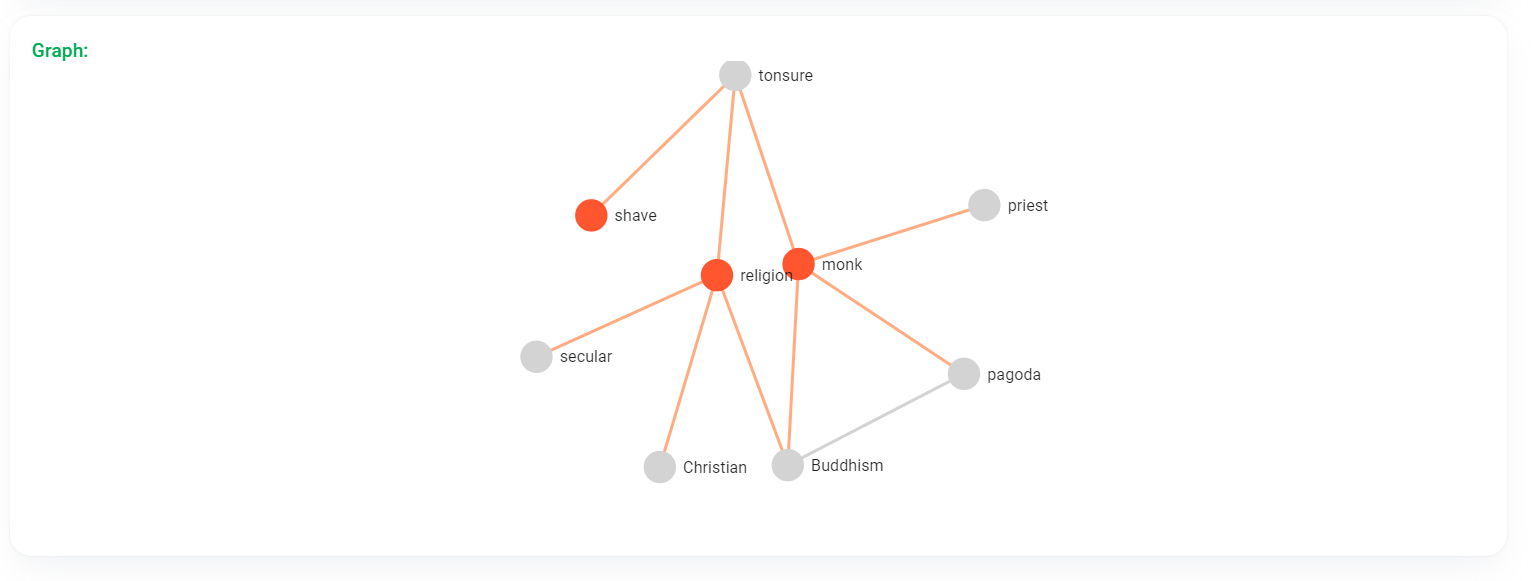
You can zoom out, zoom in, drag and drop the graph. You can also drag and drop nodes.
When hovering a vertex on the graph, you will see the adjacent edges and adjacent vertices highlighted. Similar when you hover any edge on the graph.
